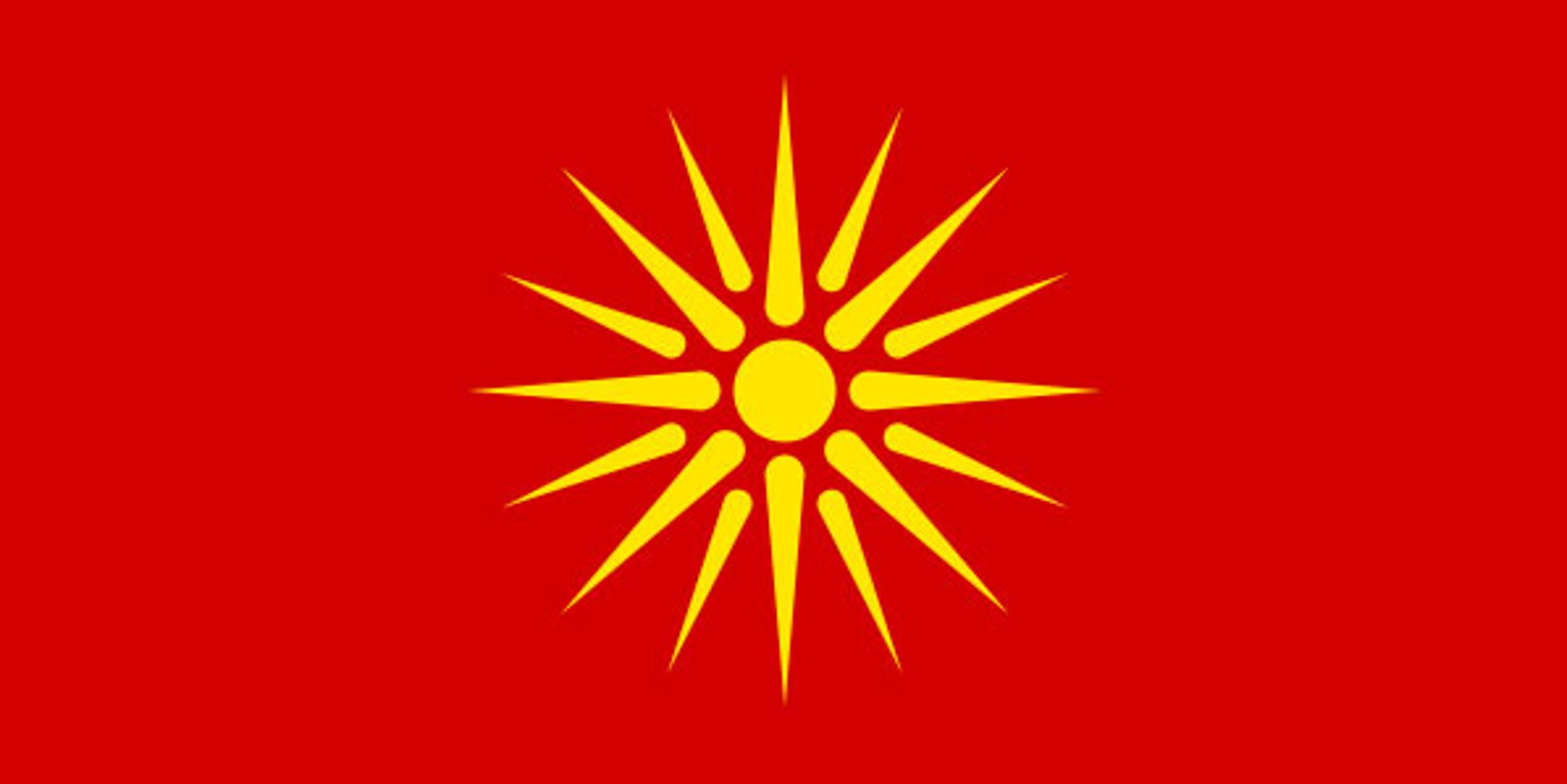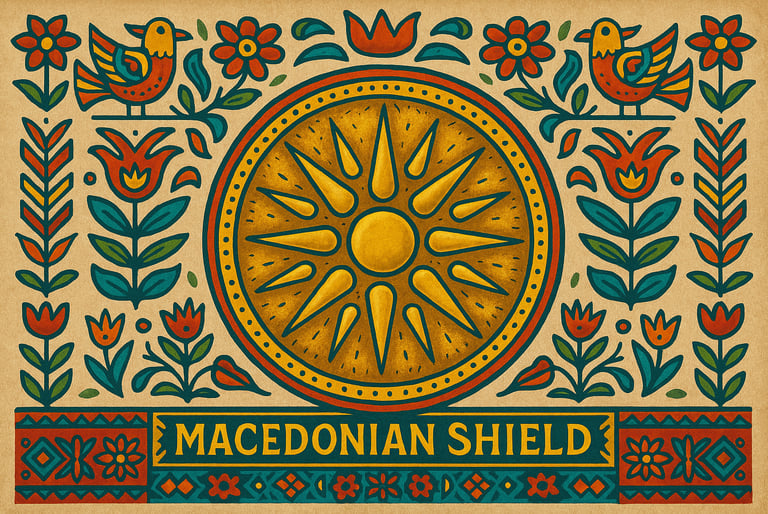
Ancient Macedonian Sun, also known as the Kutlesh Sun, is a symbol with sixteen rays arranged around a central circle. It was discovered in the late 1970s on a golden chest in the ancient Macedonian royal tombs at Vergina (Kutlesh), in today’s northern Greece. The symbol is associated with the royal dynasty of ancient Macedonia, particularly with Philip II and his son Alexander the Great. Historians believe it represented divine power, royal authority, and a connection to the sun god. In ancient times, symbols like this were common in Macedonian art, shields, and religious objects. The sunburst design reflects balance, radiance, and unity, often interpreted as a cosmological symbol. It remains an important cultural and historic emblem for Macedonians. Tourists may see it on souvenirs, monuments, and traditional art, symbolizing the ancient legacy of the Macedonian people.
It was discovered on a golden funeral chest believed to belong to Philip II of Macedon, Alexander the Great's father.
t was featured on the first national flag of the Republic of Macedonia in 1992.
The sun design appears on ancient shields, jewelry, pottery, and temple decorations.
Macedonian warriors may have used it as a battle emblem on their gear.
The name “Kutlesh” comes from the Macedonian name for the modern Greek town of Vergina, where it was found.
It caused a diplomatic dispute between Greece and Macedonia that lasted for decades.
Today, it remains a powerful cultural Macedonian symbol.


